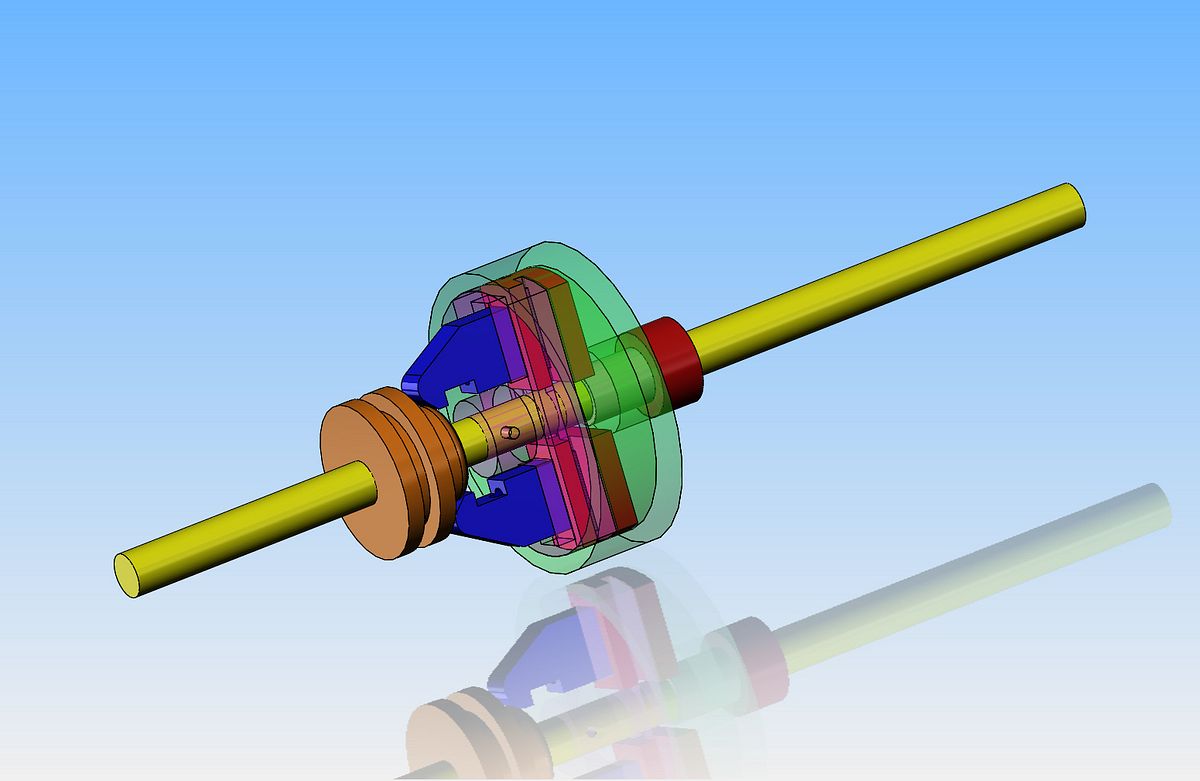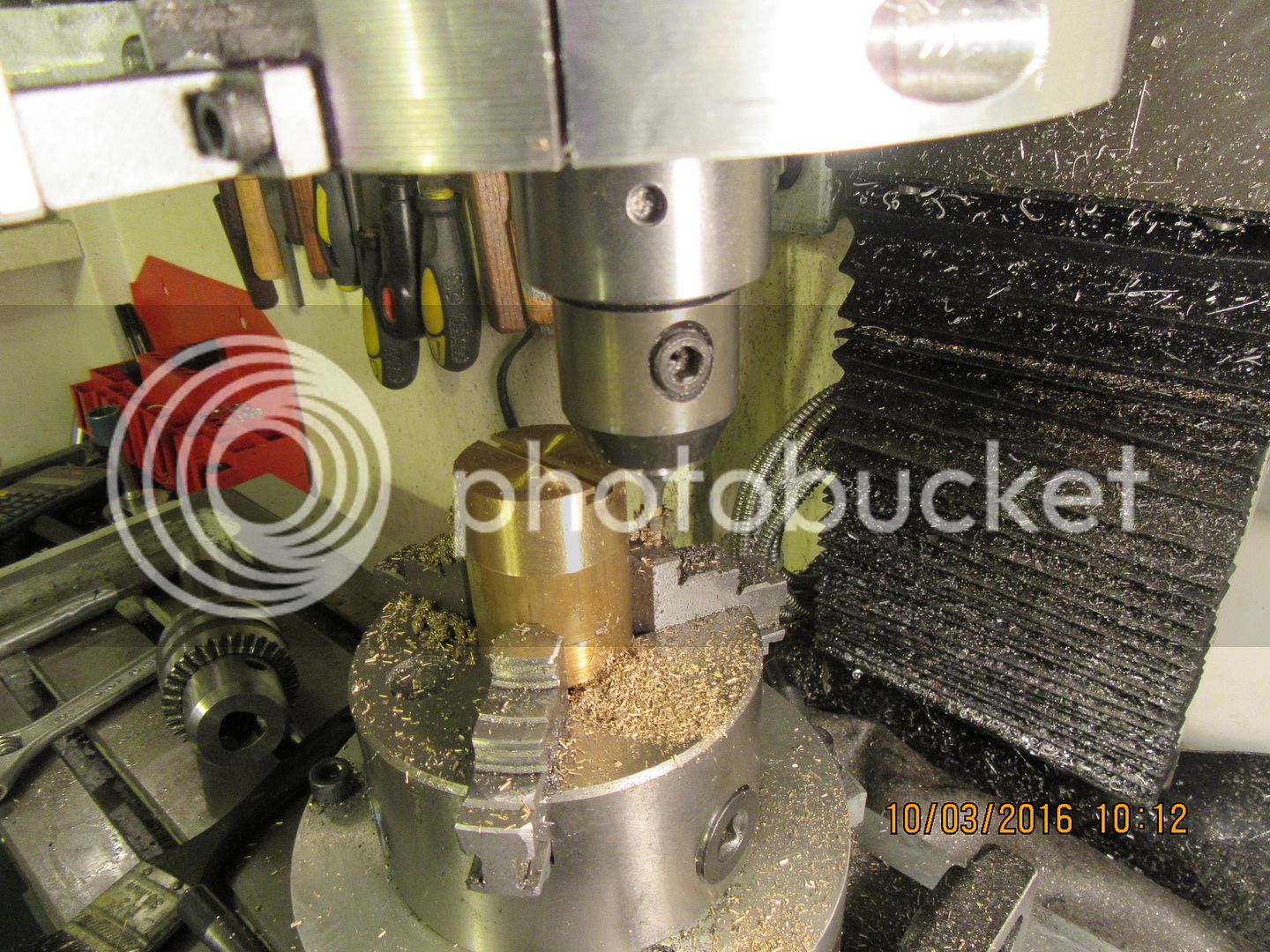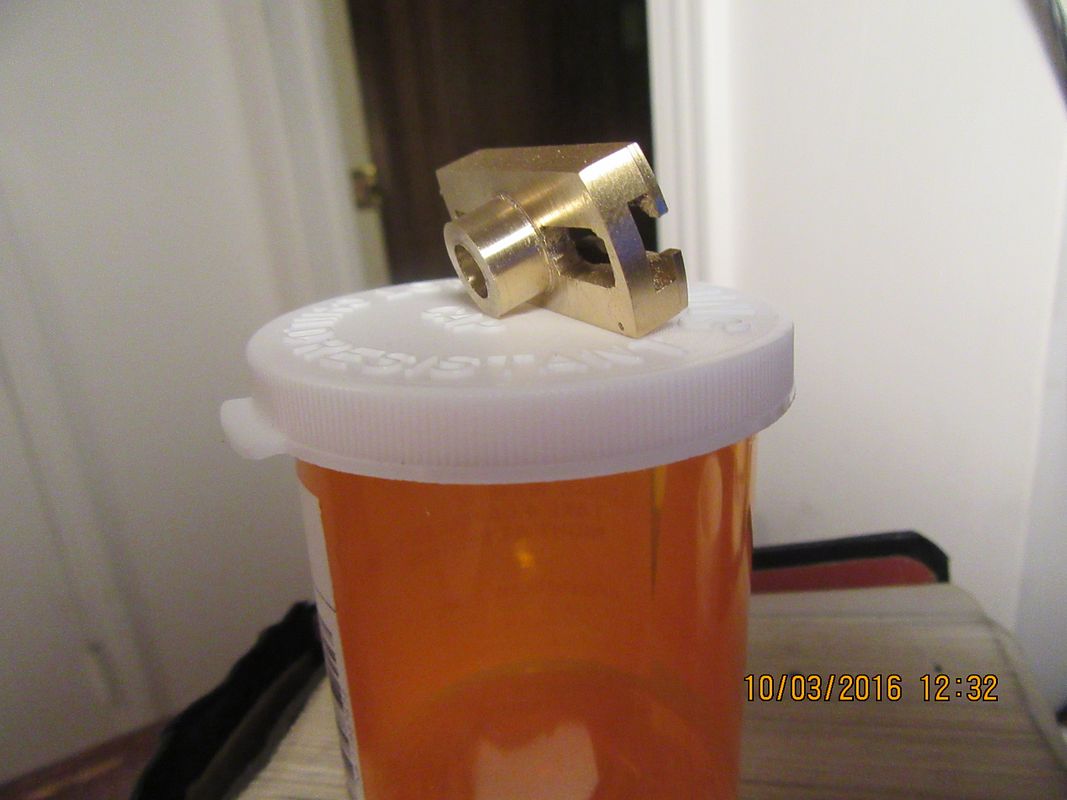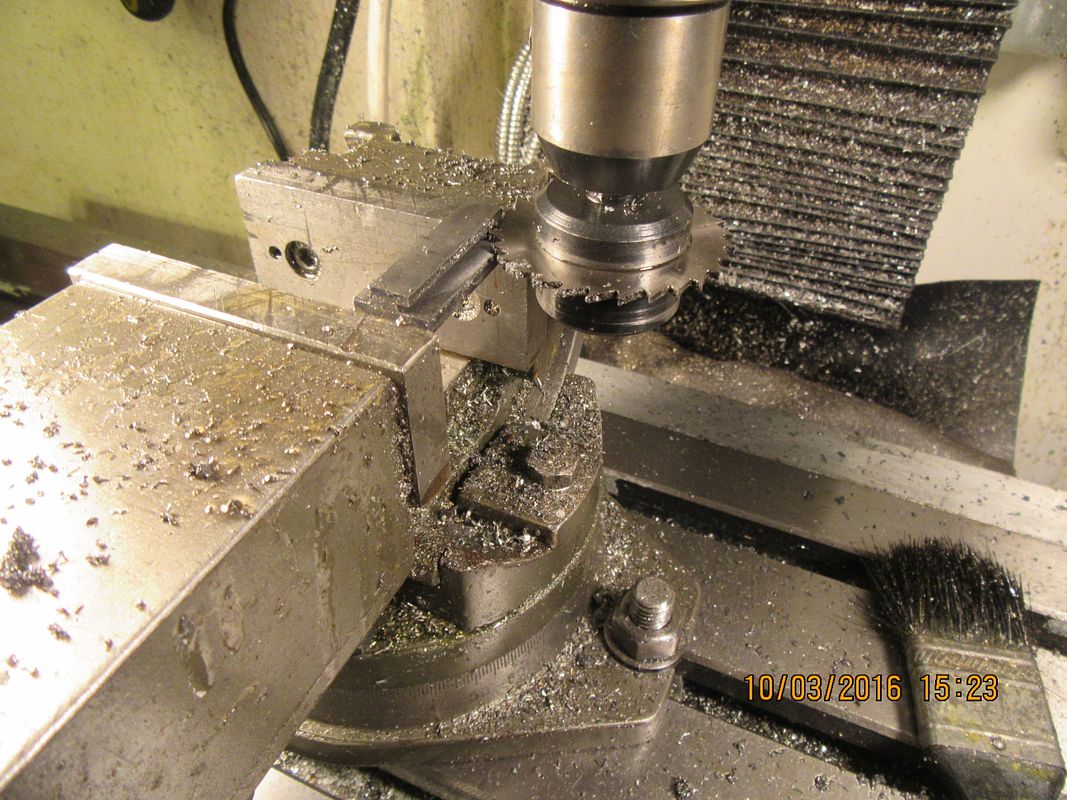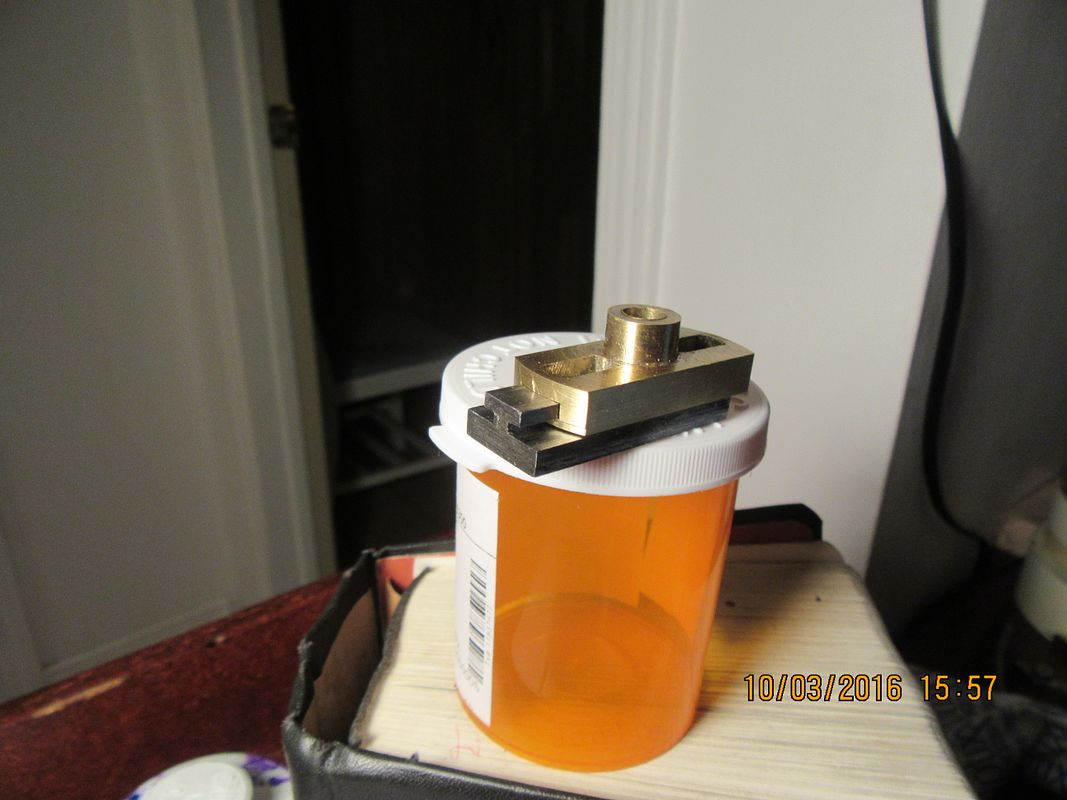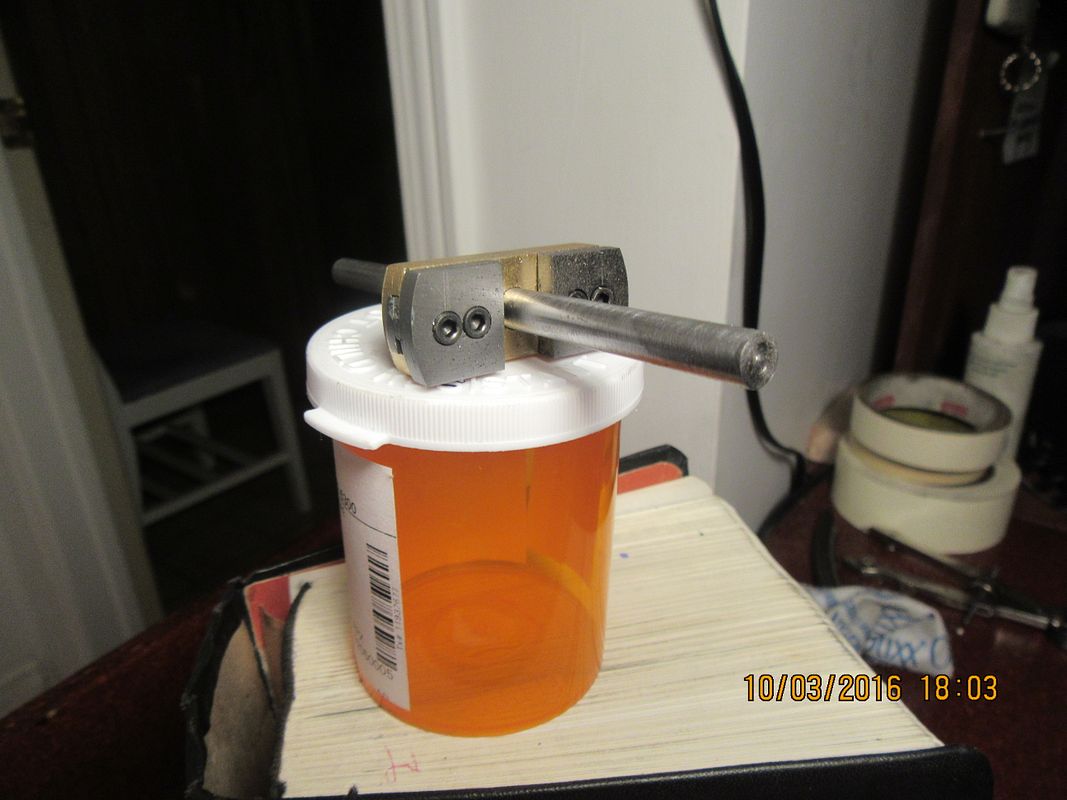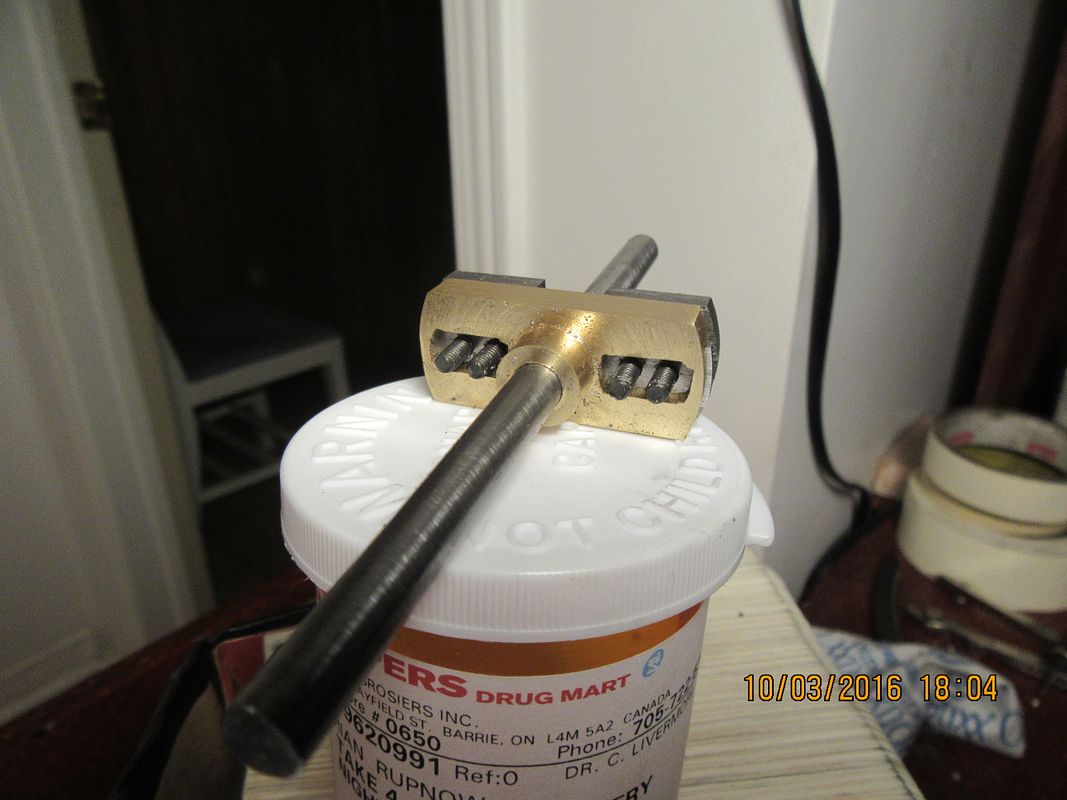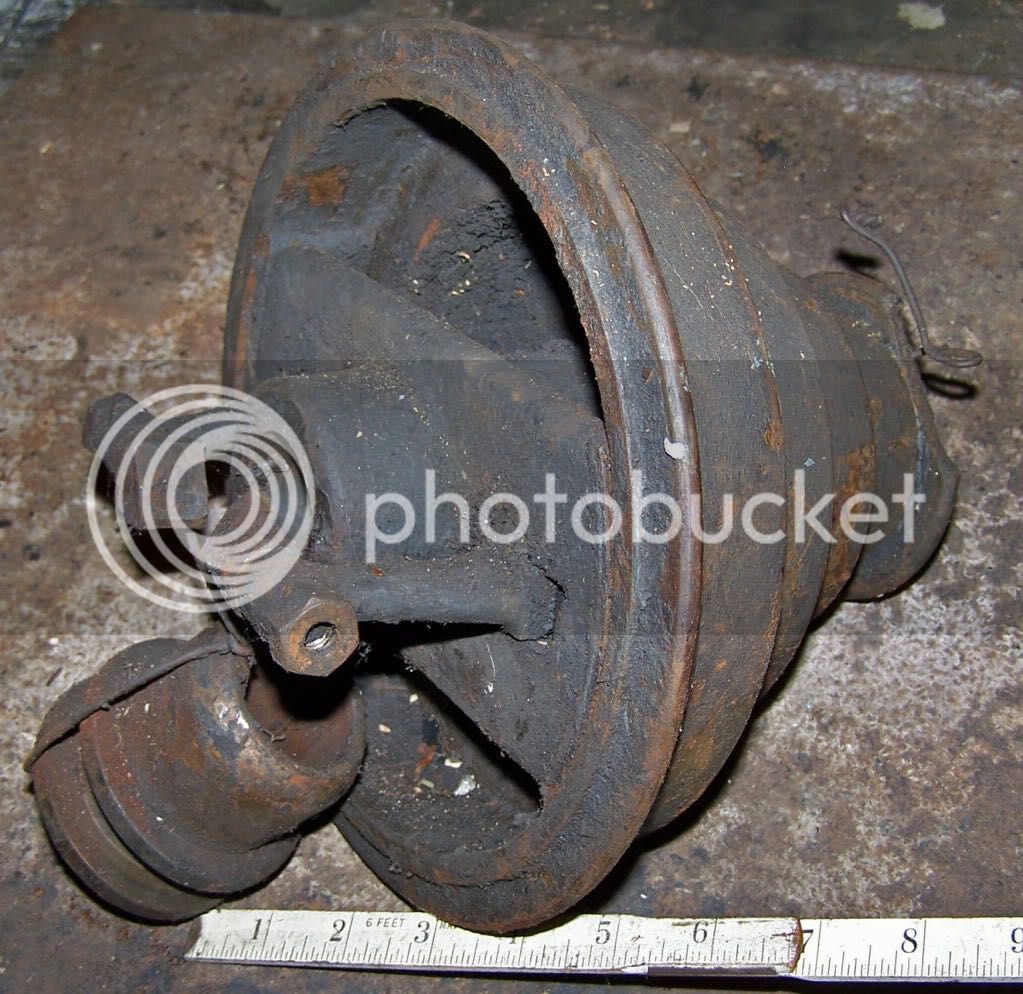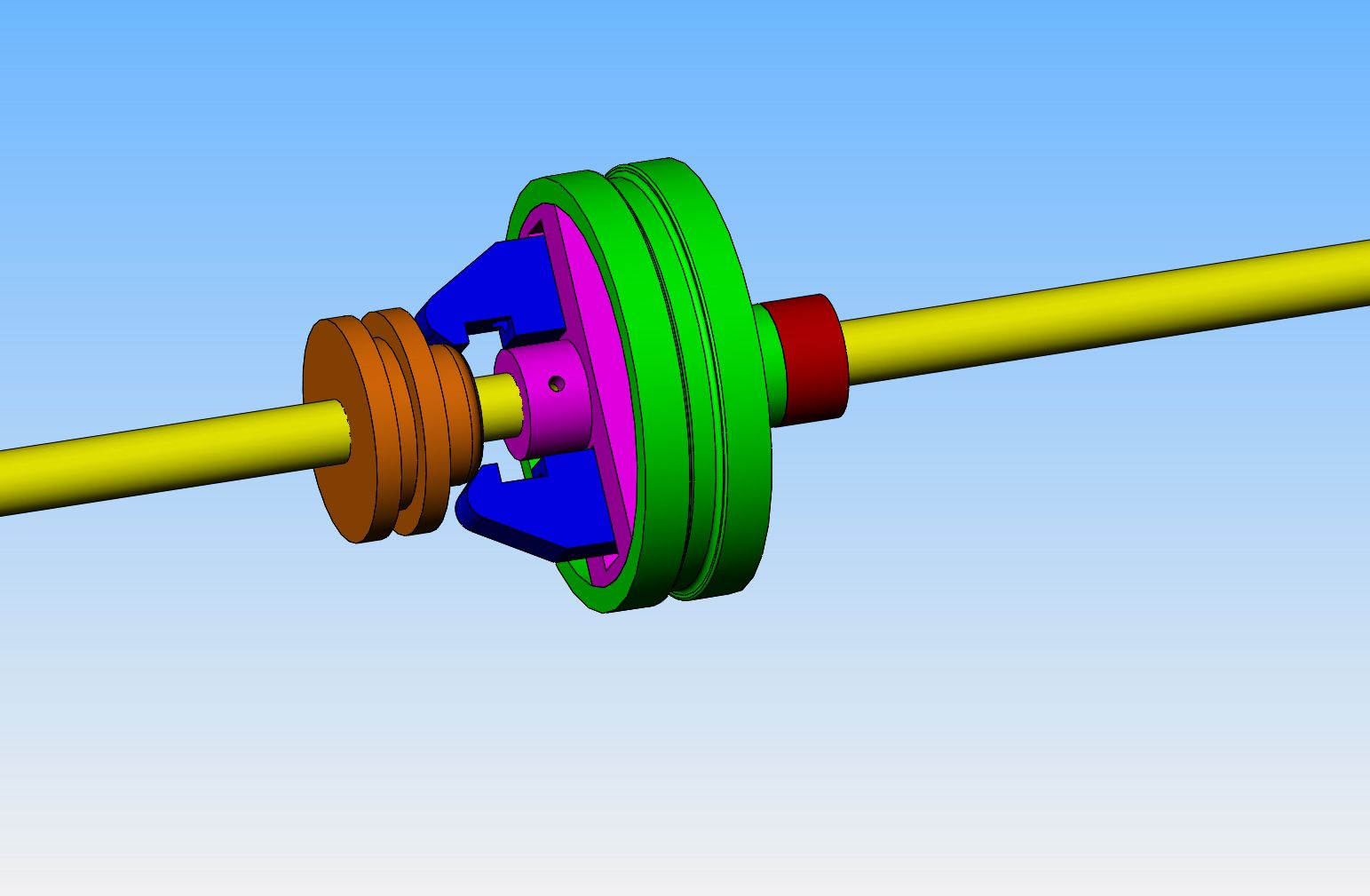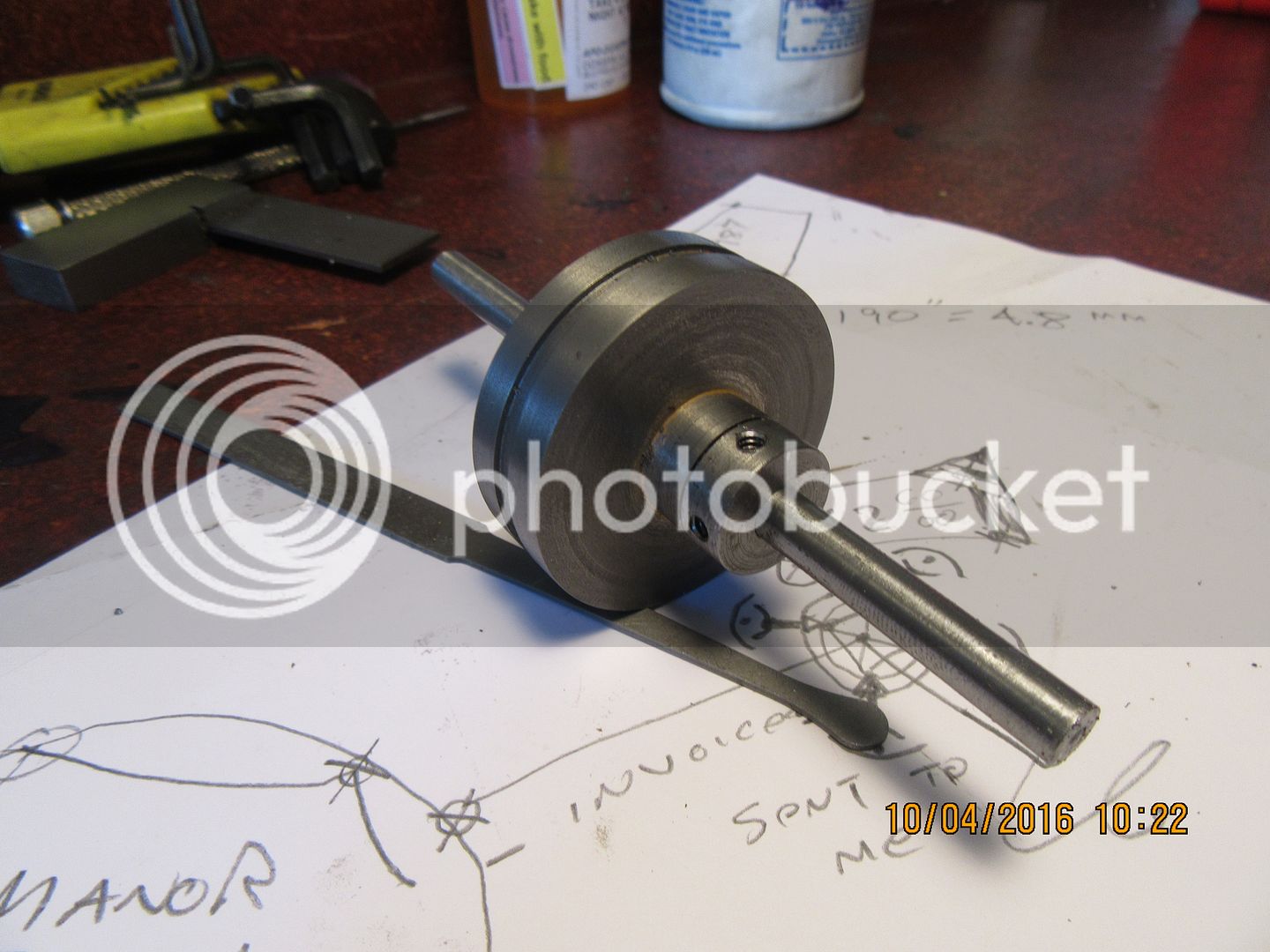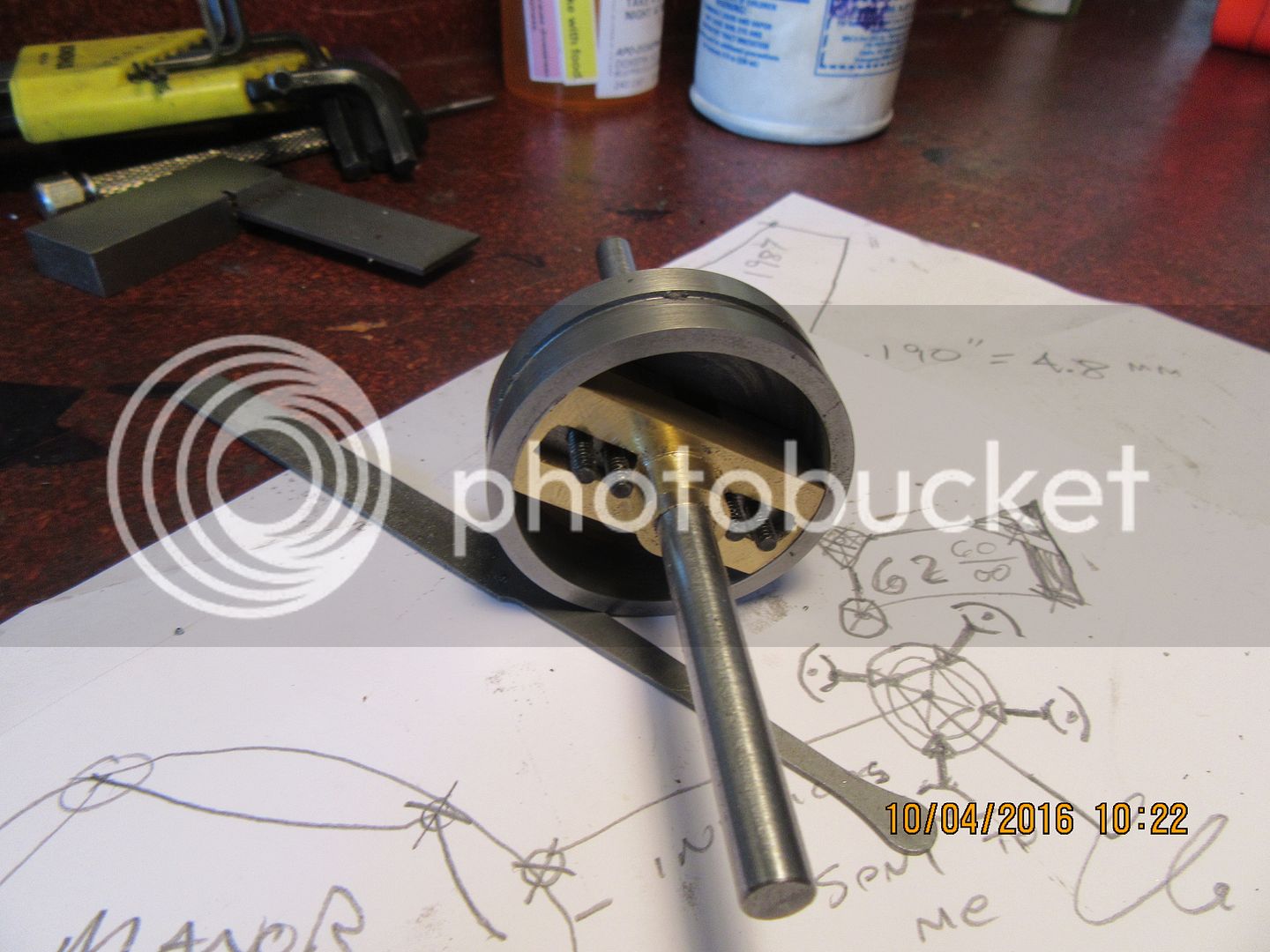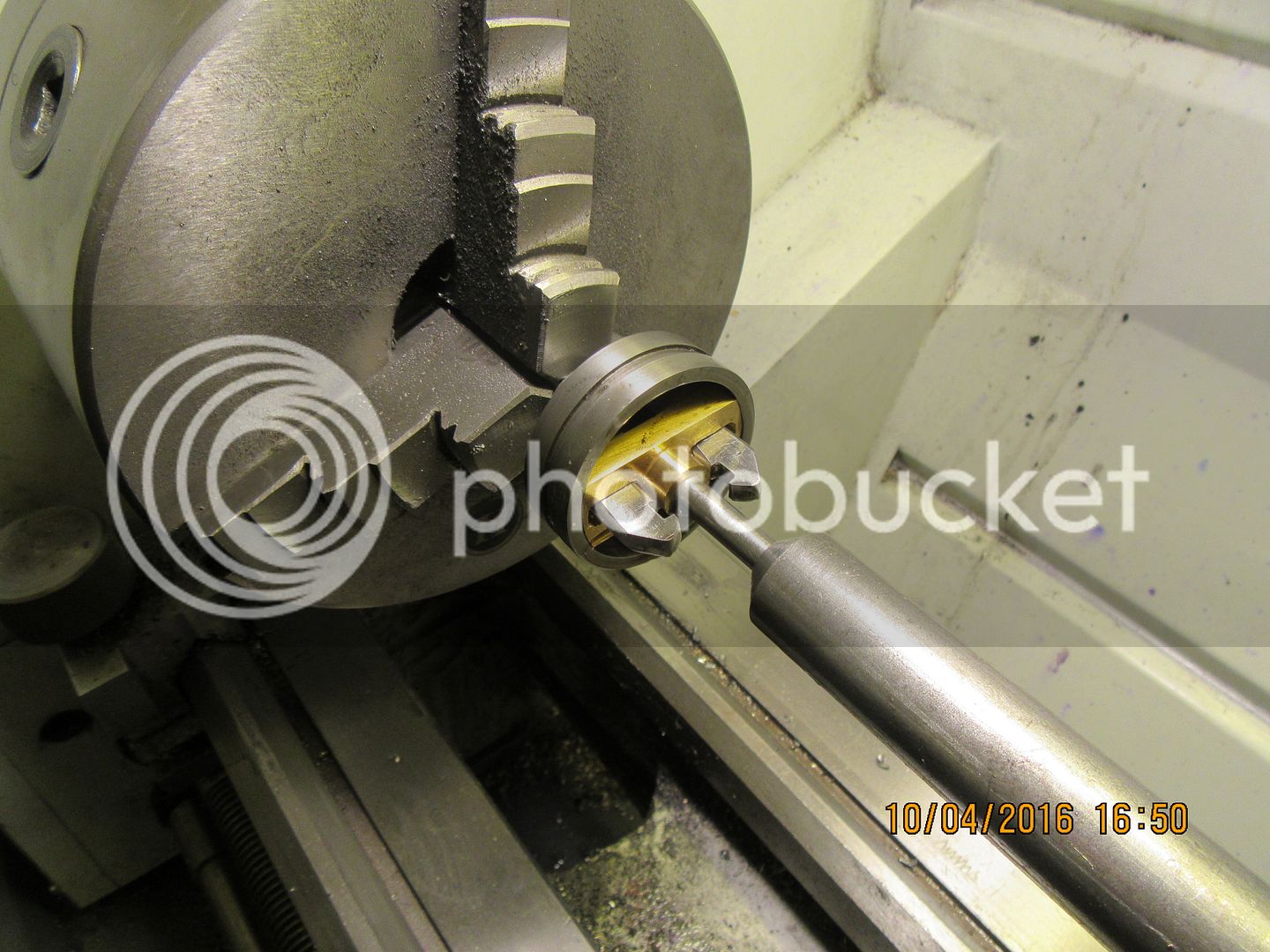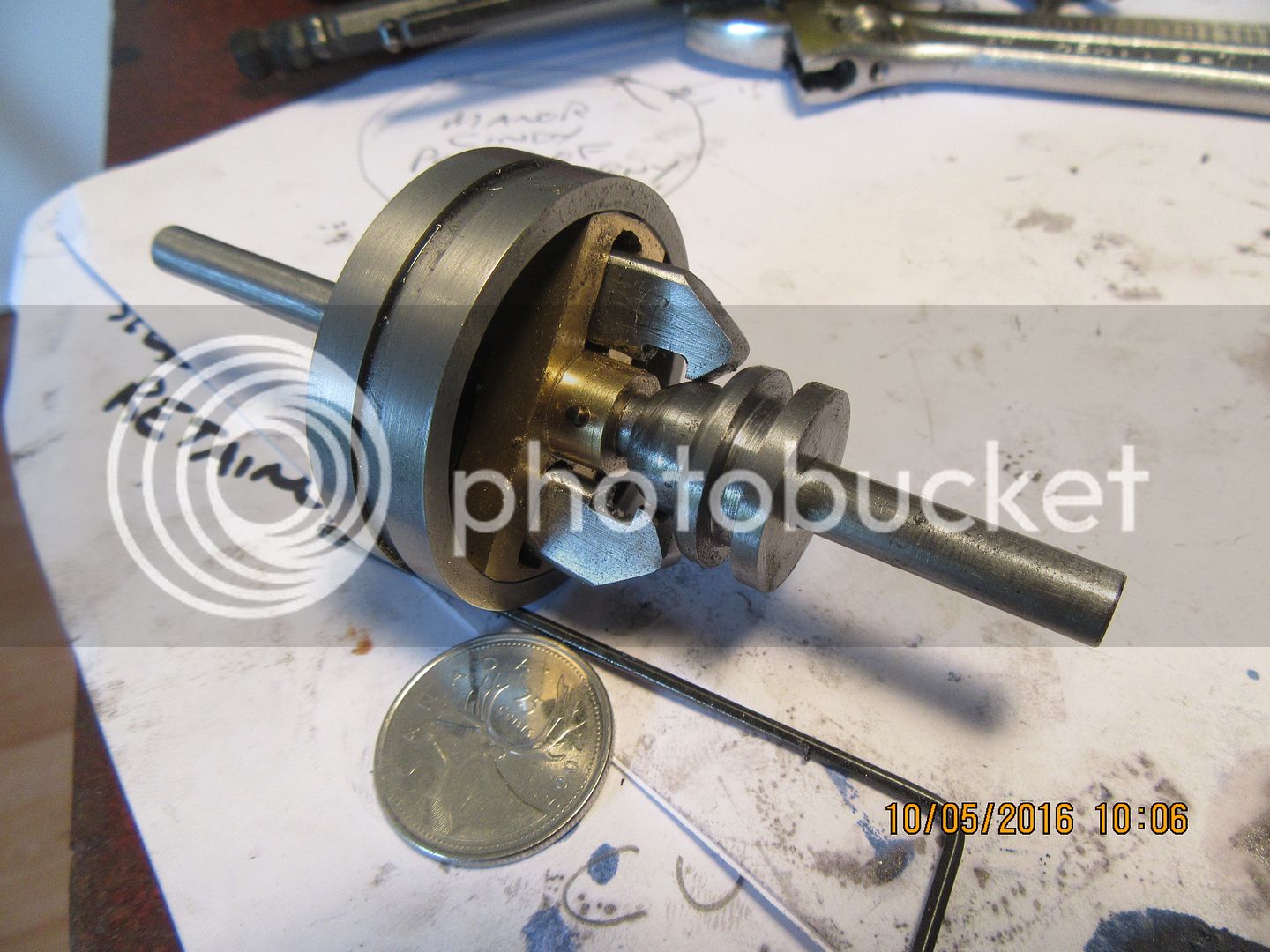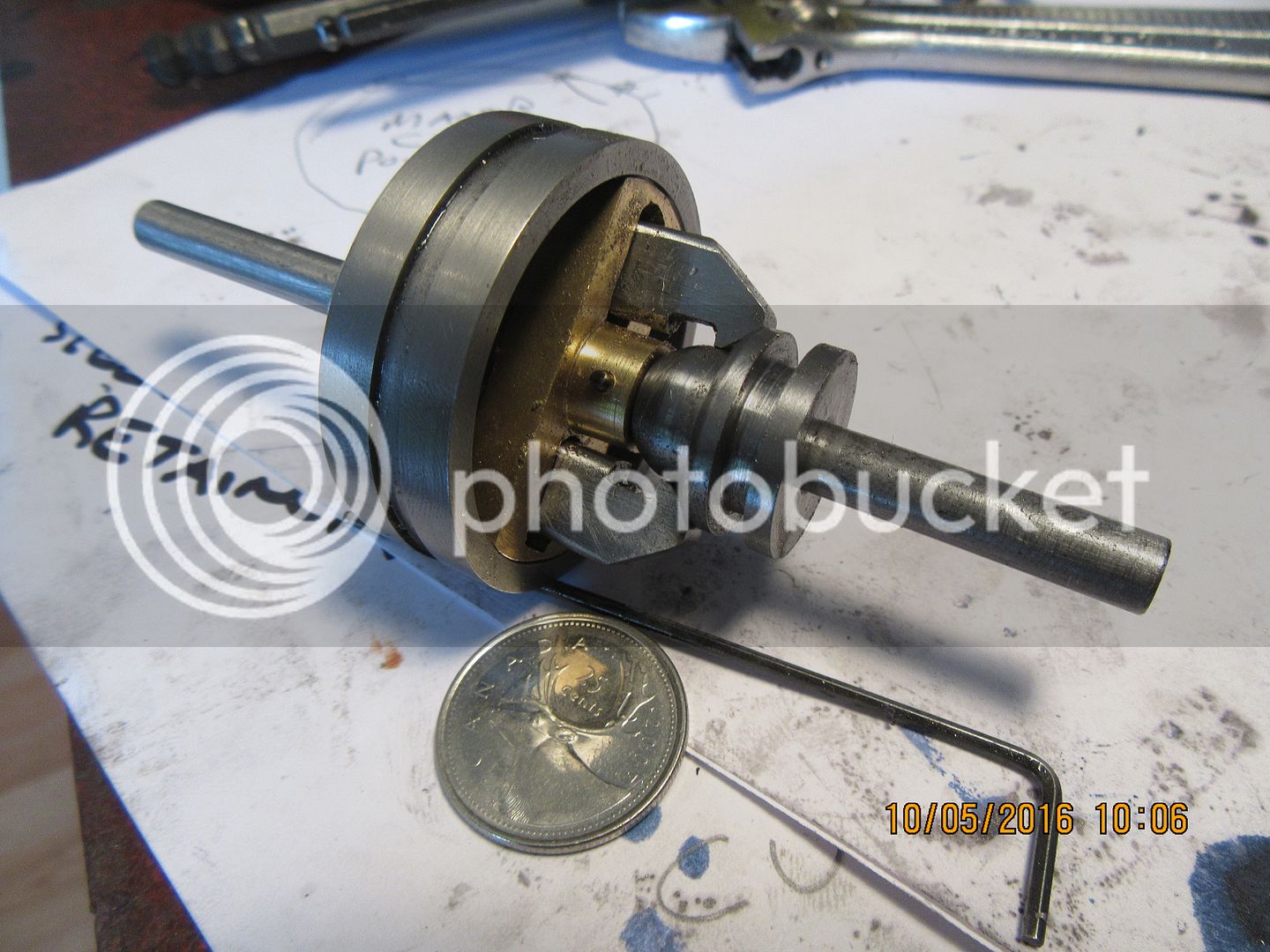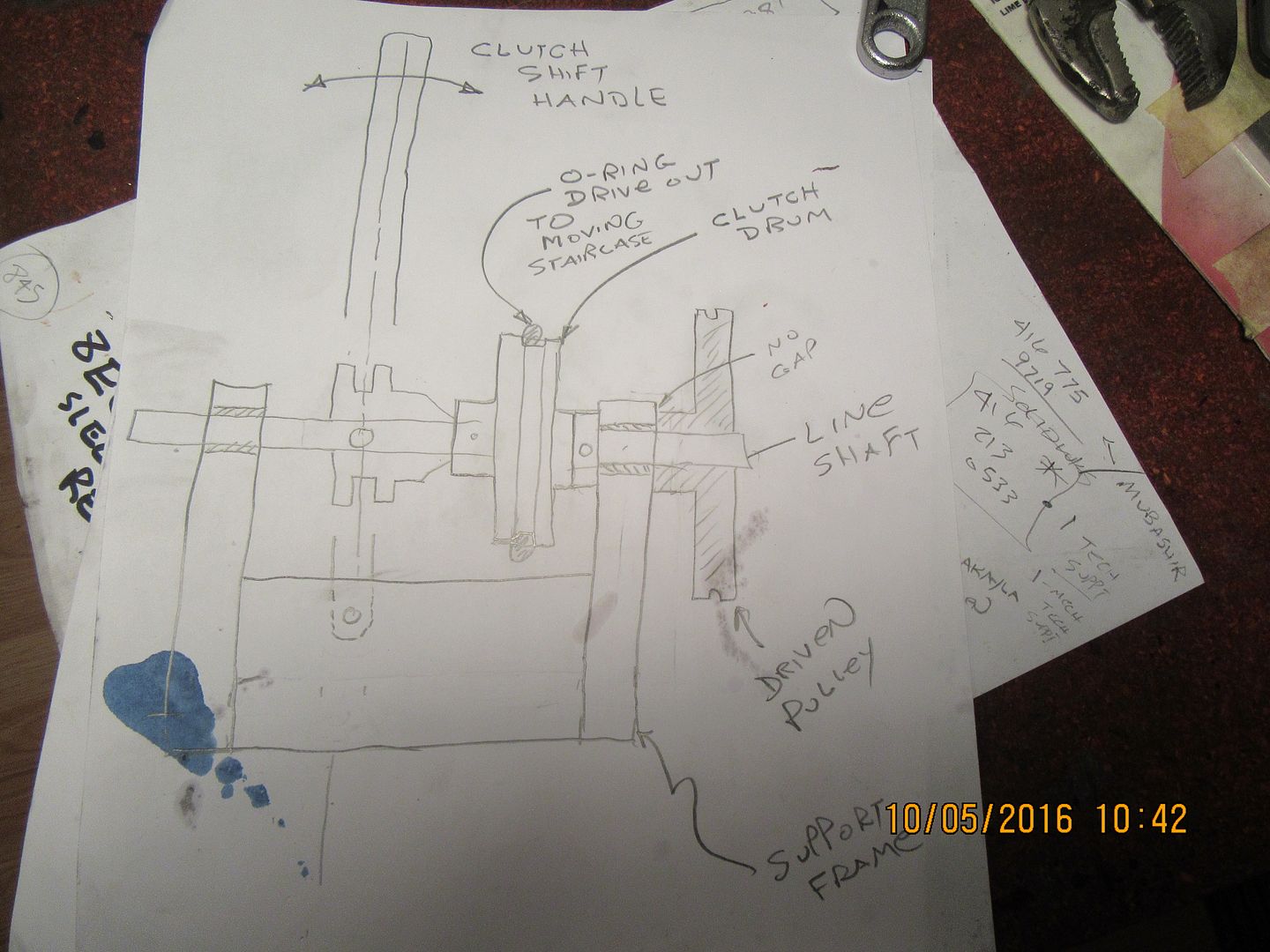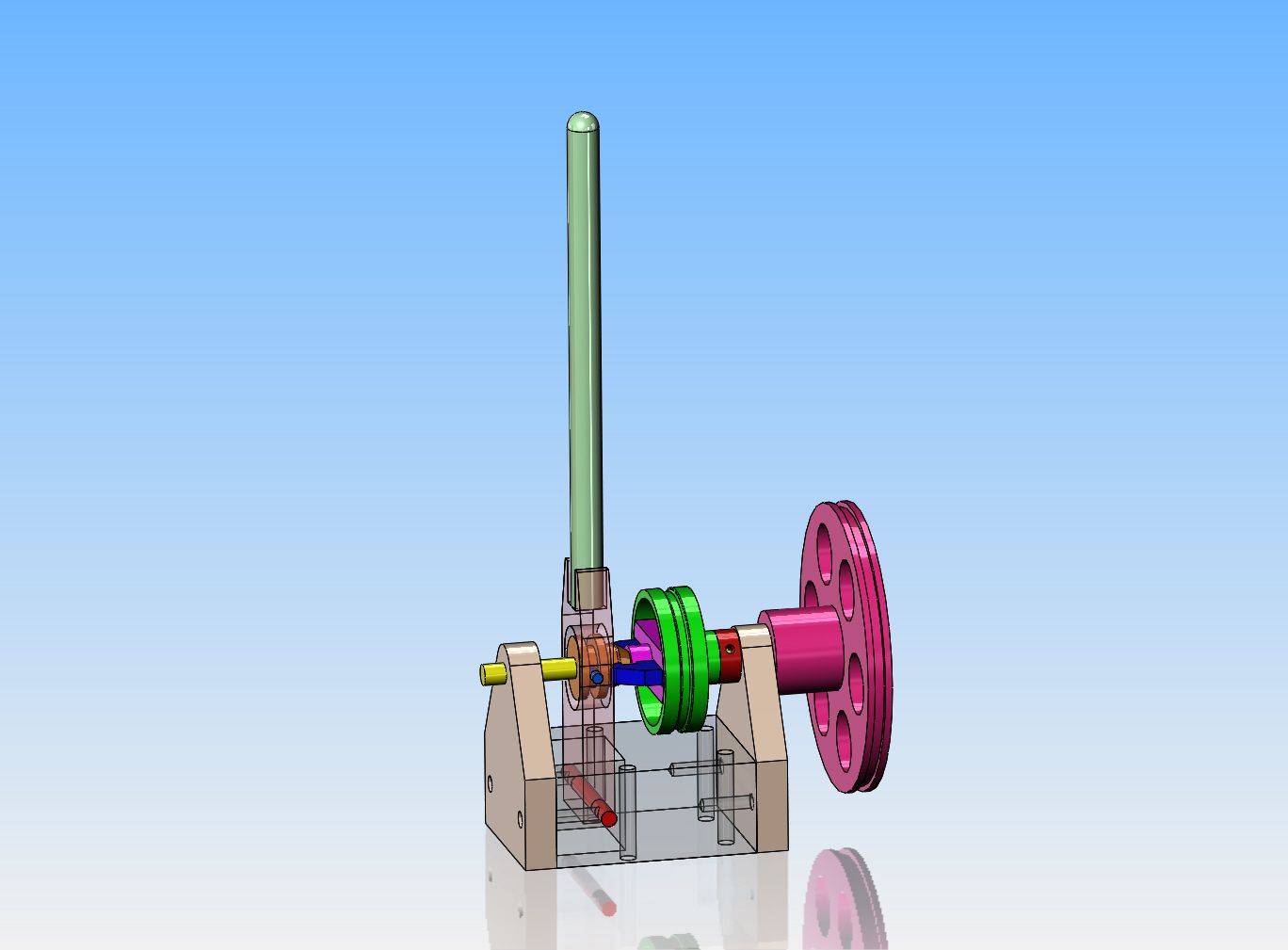After doing a bit of research on line shaft style clutches, with a manually operated swing lever to actuate them, I've decided to build one, "Just to see if I can!!" (This train of thought was brought about by John who is building the 19th century machine shop diorama on Model Engine Maker). A bit of research yesterday showed me that the smallest I can possibly make this clutch is 1.75" outer diameter, to work on a 1/4" diameter shaft. There are a few parts to this "expanding shoe" style of clutch that become too small for me to make if I try to make the clutch smaller in diameter. I have made use of a keyslot cutter in a very unorthodox manner to get started on this, and since I'm doing this in "real time" I will keep you posted of my progress.---Brian
